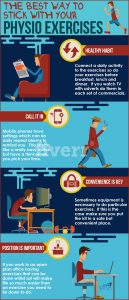
Guest article provided by: thegreatupdraft.com
In this article, we discuss how three fundamental mindfulness tools can promote better health and how they do so.
There’s now a tonne of evidence supporting the benefits of meditation and mindfulness in a diverse range of health outcomes, and it’s now an official clinical treatment used globally.
But it can be difficult to wade through all the conflicting advice and techniques and get to the root of what it is. In essence, mindfulness is simple. We don’t need to read a hundred books, burn incense, or go to Asia to learn it. We just need to commit to doing the practice and slowly incorporate it into our lives.
First, let’s clarify the word mindfulness.
What Is Mindfulness?
Though I can’t give a full treatment of what mindfulness is, and though you’ll ultimately have to discover it for yourself, it’s crucial I make clear what I mean.
There are many damaging misconceptions out there when it comes to mindfulness. Addressing those first will help us understand what it really is. To wit:
- “mindfulness is not relaxation spelled differently” as leading teacher John Kabat-Zinn says in his book Coming to Our Senses: the goal isn’t to feel relaxed or to try to feel relaxed,
- it’s much more than trying to empty your mind,
- it’s much more than feeling good or blissing out,
- and it’s much more than a cool trend.
A simple, non-technical definition is that mindfulness is about experiencing your senses, your body, and your mind, as fully as possible (mind-full-ness). It entails cultivating a few key attention skills through simple, practical exercises that we can do both in stillness and in daily life.
It sounds simple, almost trivial, but for millennia it has formed the backbone of meditative traditions the world over. And our best science is now confirming its wide-ranging benefits, including its remarkable effects on mental and physical health.
We have plenty of evidence that the benefits come in direct proportion to the number of hours of formal practice. It’s clear that there are myriad benefits at all levels, and that true transformation comes after years of dedication. In this sense, meditation is a form of training. The more you train, the greater the benefits.
I’ve found that though mindfulness is essentially simple, its benefits are surprisingly wide-ranging and all-encompassing. As I deepen my practice, which is based on the Unified Mindfulness system, the more I realise its importance for my physical and mental health.
3 Fundamental Mindfulness Tools
Let’s look at three key mindfulness tools you can use to promote better health. At their root, these practices are simple and you can master the steps with a small amount of repetition. That said, it takes practice to tap into their power and then to incorporate them into your daily life, which is when you really start to glimpse their potential.
These three mindfulness practices are common to many starter programmes and are essential to any deep and broad mindfulness journey. To begin, practice these in a quiet environment where you can be comfortable and undistracted for at least 20 minutes.
The Body Scan
In the body scan, you systematically work through all parts of the body, working with each for 10-20 seconds. You hold the body part in your attention, with as little resistance as possible, and try to feel it as fully as you can. Detect things like shape, size, temperature, changes in sensations, and so on. Work systematically through the entire body from your toes to the top of the head.
Mindfulness of Mental Chatter
We almost continually experience mental chatter, and its effects on our lives are too numerous to mention in this short article. But let me give you a neat metaphor.
Imagine having a wild, drunk, hyper monkey living in your house. The monkey constantly runs around wreaking havoc, screaming and knocking objects over all day long.
But you’ve lived in the house for so long that you no longer pay the monkey any heed. You don’t even realise it’s there. So you live all day, every day, going about your usual business, and assuming that having a wild monkey in your house is normal.
This gives you an idea of the depth of our predicament as human beings with active minds. The monkey is our mind: it’s the monkey mind.
Transforming our relationship to this monkey is a central goal both of mindfulness programmes and of spiritual traditions in general, and I can tell you from experience that it’s totally life-changing.
In mindfulness of thought, we place our attention in the head area, which is where our mental chatter appears. Whenever we notice mental chatter, such as planning, remembering, monologues and dialogues, we hold it in our attention, and detect things like the location, volume and movement of the chatter.
We’re not analysing our thoughts, rather trying to get an accurate perception of them as raw phenomena. Work with each piece of mental chatter for a few seconds, completely allowing it to come and go as it pleases.
What you’ll find is that our mental chatter comes and goes spontaneously. It’s like a bubbling jacuzzi: the bubble comes up from the depths, stays at the surface there momentarily, and then disappears. Then another one appears and stays for a short time before disappearing. This process is ongoing and never-ending.
And most importantly of all, it’s possibly to simply observe this process without being averse or attracted to the thoughts. You can watch them come and go freely.
Mindfulness of Emotion
Another powerful practice is mindfulness of emotions. It’s a similar process to the previous two meditations, except here we work with the “feeling” part of our emotions – the signature of emotions in our body.
Keep your attention in the stomach, chest and face – this is where most people’s emotional centre is located – and when you notice an emotion, whether pleasant or unpleasant, hold it in your attention and bring clarity to it. You’ll likely need a healthy dose of equanimity or non-resistance too, otherwise you’ll resist your emotions and try to push them out.
The goal is to get a clear picture of our emotions as they rise and fall in the body. We’re trying to feel them as intimately as possible, yet develop a certain detachment from them.
How These Mindfulness Tools Promote Health
Let’s talk broadly about how these simple mindfulness tools promote health in various dimensions. When it comes down to it, I think mindfulness does this because it takes slowly us out of auto-mode and into greater consciousness and embodiment.
See Through Your Thinking
Thinking is the default human mode. When nothing else is happening, we’re usually lost in our mental world. And not only are we lost, we literally confuse ourselves for our thinking. We confuse living with thinking. We’re addicted to thinking.
The implications of this are too broad and deep to explain here. In short, addiction to thinking means we are at its mercy, and our thoughts can tell us all kinds of things about who we are, what life is, how we should behave, and what decisions we should take.
The content of thought usually isn’t measured, considered and wise, but automatic, fear-driven and damaging. And this translates into action of a similar quality: living in the past and future, rushing around, overeating, smoking, overworking, consuming alcohol and drugs, and so on.
When we buy into our thinking, we’re not really living our life: our thoughts are living our life. It’s crucial to create distance from them and gain insight into them if you want to experience lasting change.
Meditation is the best tool out there for gaining awareness of and insight into your thinking, and it’s hard to overstate the effects this can have on your life and health.
Aware of Body
Our mental world is intertwined with our body. If we surrender control of our lives to our mental world, we simultaneously surrender control of our body. We left unable to connect with our body and listen to its messages. We are unaware of how all our habits are jeopardising our mental and physical health.
Nothing is random in the body. It’s not some dead machine that simply takes in fuel and spits out waste product, but an unimaginably complex organism whose parts interact to keep us functional and healthy. Its main organ, the brain, is the most complicated system we have yet discovered in the universe.
And this remarkable organism gives us feedback on the state of its functioning. When it loses balance and equilibrium, messages come to our conscious awareness, like pains, exhaustion, heaviness, changes in temperature, release of fluids and so on. When things are working well, we experience lightness, energy, a sense of ease.
If we lack awareness or control of the body, we miss these physical signals and continue to run our automatic mental programs at all costs. We continue our bad habits and addictions, believing we can somehow bypass this incredibly intelligent, highly ordered organism.
Meditation, particularly techniques in which you work directly with the body, puts you in touch with the body and helps you stop living in auto-mode.
Awaken to the Present
Come out of auto-mode, and you’re in a much better place to take considered decisions that will benefit your health. As you tune into the body and see through your automaticity, you take charge of your life and can act skillfully, realigning your rhythm and habits to benefit your health rather than jeopardise it.
Use These Tools
The three exercises I’ve briefly explained above are a great way to kickstart your meditation journey. All it takes is commitment and consistency, and you’ll start to see first-hand how meditation can benefit your wellbeing in a number of dimensions.
Photo By: pexels.com











